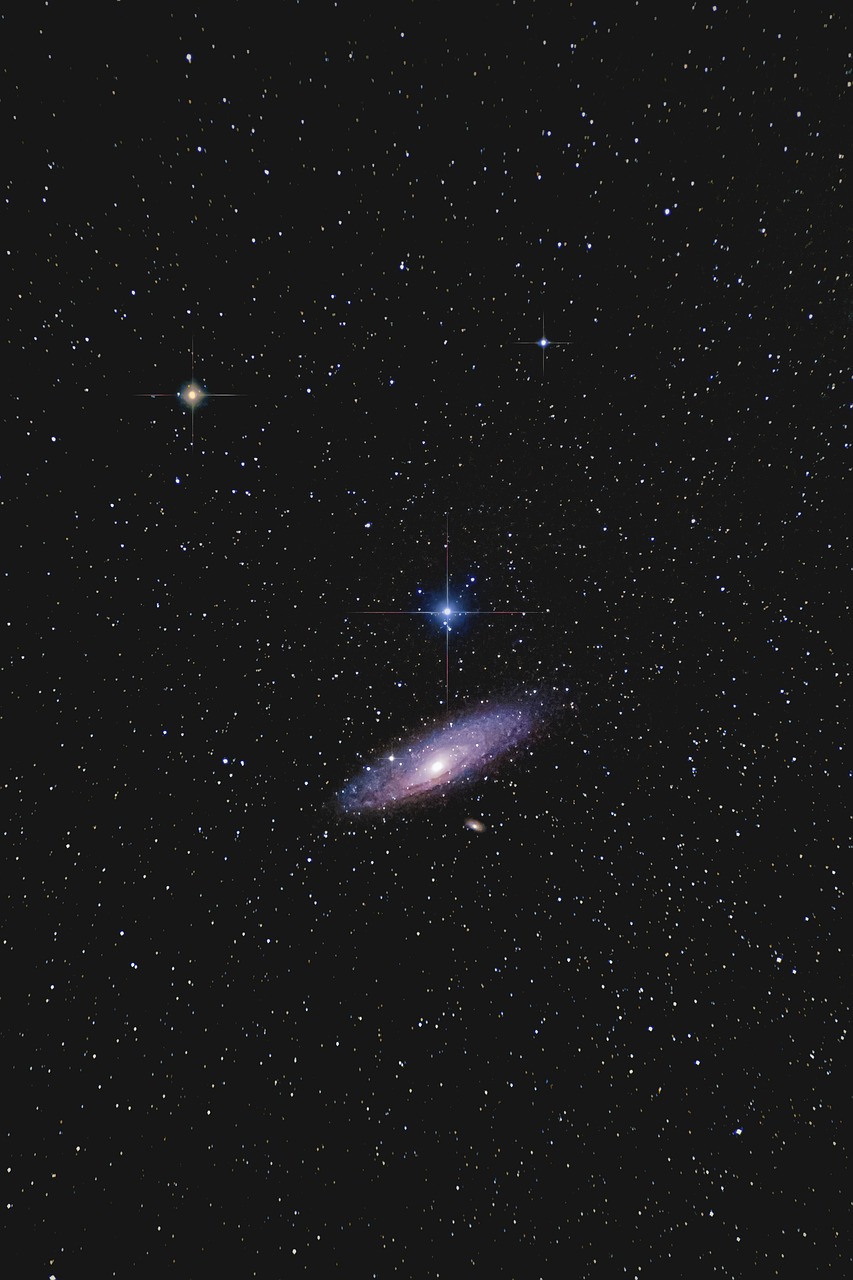The Andromeda Galaxy, situated a mere couple of billion light years away, is our Milky Way’s closest neighboring galaxy. It stands as one of the few galaxies observable to the naked eye from Earth. Enthusiasts of the night sky are often captivated by the Andromeda constellation, which derives its name from a legendary princess who, saved from a fearsome Kraken by her knight, found her eternal rest among the stars, courtesy of the goddess Athena. This ancient tale of Andromeda continues to resonate both in heavenly lore and contemporary culture.
The Andromeda Constellation
The constellation Andromeda is home to the Andromeda Galaxy, the nearest galaxy to our Milky Way. This constellation graces both hemispheres, although the Northern Hemisphere offers a clearer view. In this region, Andromeda can be best observed from August through February, whereas in the Southern Hemisphere, the optimal time is between October and December.
Also referred to as the Chained Woman, Persea (Perseus’ wife), or Cepheis (daughter of King Cepheus), Andromeda ranks as the 19th largest constellation, covering an area of 722 square degrees. Despite the great distance of around 2.5 million light-years, Andromeda’s brightness allows for its visibility from Earth with the naked eye, making it one of the ten galaxies we can observe.
Andromeda is noteworthy not just for its proximity but for its vast collection of roughly one trillion stars. In contrast, our Milky Way is estimated to contain around 250 billion stars. This galaxy features 16 stars visible from the northern sky, with nine named stars and four prominent ones:
- Alpheratz or Alpha Andromedae
- Mirach or Beta Andromedae
- Almach or Gamma Andromedae
- Delta Andromedae
Interestingly, Alpheratz, one of Andromeda’s most significant stars, shines 200 times brighter than our Sun and has an incredibly high surface temperature of around 13,800 Kelvin, compared to the Sun’s 6000 Kelvin. Notably, the Cassiopeia constellation directs observers towards Andromeda, which is found nestled between Cassiopeia’s W-shaped pattern and the Great Square of Pegasus.
Neighboring constellations include Cassiopeia, Lacerta, Pegasus, Perseus, Pisces, and Triangulum.
The Myth of Andromeda
In the annals of Greek mythology, Andromeda is the stunning daughter of King Cepheus and Queen Cassiopeia. Her tale, like many from this rich mythological heritage, unfolds with themes of love, valor, and tragedy. Cassiopeia often boasted of her daughter’s extraordinary beauty until one day, her excessive pride led her to claim that Andromeda surpassed even the Nereid sea nymphs in looks. Offended, Poseidon unleashed the Kraken, a monstrous sea creature, upon Cepheus’ realm.
To pacify Poseidon and salvage their kingdom, Cepheus and Cassiopeia resolved to sacrifice their daughter, chaining her to a seaside rock for the monstrous Cetus to claim. Fate smiled upon Andromeda when the heroic Perseus, on his winged steed Pegasus and armed with Medusa’s severed head, discovered her. Struck by love at first sight, Perseus took action.
Different versions of the story exist: some assert that Perseus defeated Cetus with his sword, while others hold that he petrified the beast by showing Medusa’s head. Regardless, he vanquished the Kraken and won Andromeda’s hand in marriage. Together, they had seven sons and two daughters and enjoyed a blissful life.
Professor Karen Carr of Portland State University notes that this tale, originating at least back to the 500s BC, has numerous iterations, reinforcing its powerful narrative of heroism that has influenced modern fairy tales where a prince triumphs over a monster to save a princess.
Ascension to the Stars
Athena, the goddess, granted Andromeda a celestial home, promising her a place among the stars upon her demise. This blessing helped transform Andromeda into a divine figure, immortalizing her legacy.
The Concept of a Zombie Galaxy
A “zombie galaxy” refers to a galaxy that has depleted its cosmic resources, such as hydrogen gas, vital for star formation. As galaxies exhaust this “fuel,” their star formations gradually cease, leading to a slow fade over billions of years. Astrophysicist Kevin Schawinski has indicated that Andromeda may fit this description, being on the brink of cosmic death yet oblivious to its state.
Andromeda in Contemporary Culture
The enduring myth of Andromeda continues to inspire modern storytelling. She made notable appearances in contemporary adaptations, such as the 2010 film “Clash of the Titans.” Furthermore, Andromeda has left her mark on literature and cinema; Jodi Picoult features a character named Andromeda in her novel “My Sister’s Keeper,” while J.K. Rowling’s Harry Potter series introduces Andromeda Tonks. Michael Crichton authored “The Andromeda Strain,” and Rick Riordan named a ship in his “Percy Jackson” series The Princess Andromeda.
Conclusion
Entwined with fascinating stories of Greek mythology, the tale of Andromeda remains significant. From her sacrifice to her rescue by Perseus, ending in a happily ever after, she embodies themes that resonate through time. Andromeda’s presence is ever-present in the heavens; to glimpse her, one only has to look up.



